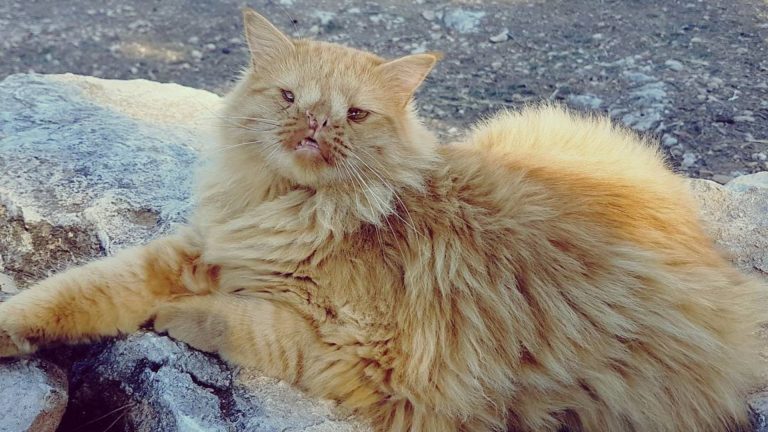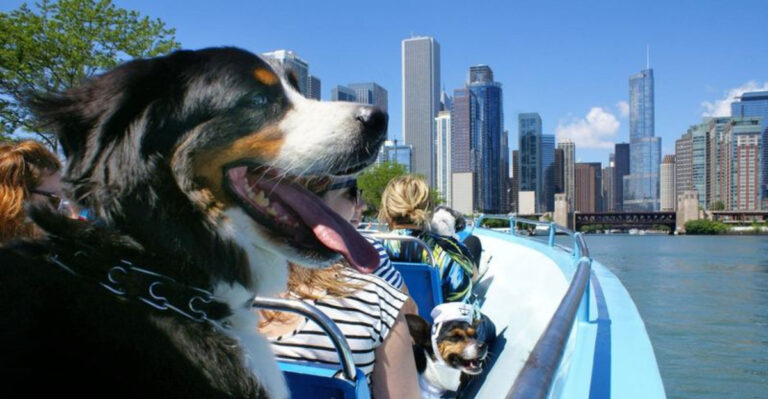Cat Third Eyelid Showing No Other Symptoms: Causes & Care
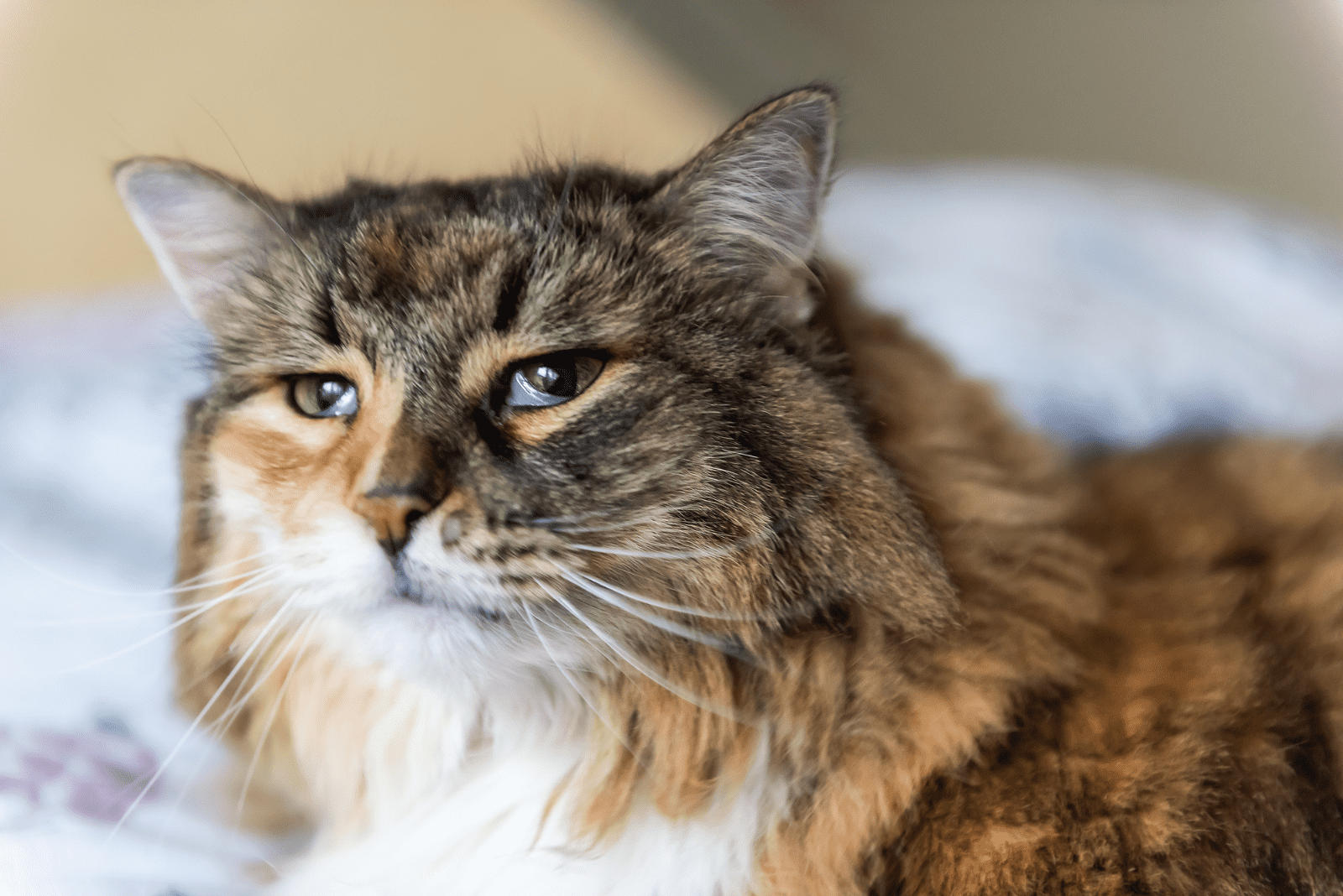
Some cat owners might not be aware that their furry friends have a third eyelid ! Humans don’t have it, so I can understand why it might come as a surprise.
A cat’s third eyelid plays an important role in moisturizing the eyeball , as well as keeping dirt away. It should not be visible because it retracts into the inner corner of the eye . If it does become visible, it’s usually a sign that something is wrong.
It is also possible for the third eyelid to be visible for a very short time (for example, after the cat has woken up), but the third eyelid always retracts quite quickly in that case. When it doesn’t immediately retract, a protruded third eyelid is a health concern that needs veterinary care.
If your cat is not displaying any other symptoms, there is a chance that no other symptoms will arise, or it can mean other symptoms have not arisen yet but will after some time.
If you want to know more about what to do about a cat third eyelid showing no other symptoms being present, keep on reading to learn more about the potential causes of this issue and what you should do if your kitty ever experiences it.
Cat Third Eyelid Showing No Other Symptoms: Should You Be Worried?
The third eyelid is typically hidden from view in a healthy cat’s eyes because it retracts into a little pocket at the corners of their eyes. As I mentioned, there is a chance of you seeing a cat’s third eyelids when a cat wakes up from a lengthy nap or after being under anesthesia – but pretty quickly they become invisible again.
On the other hand, if your kitty’s third eyelid is not retracting into its “normal” position but instead stays visible, that is almost always an indication that something is wrong. There are many underlying causes of a cat’s eye problem when the third eyelid is not retracting.
There may be some other signs of illness , or there can be no other symptoms showing (at the moment).
Your cat’s health is always a priority, so I suggest you keep on reading to educate yourself as much as you can about this potential health concern!
What Exactly Is The Third Eyelid In Cats?
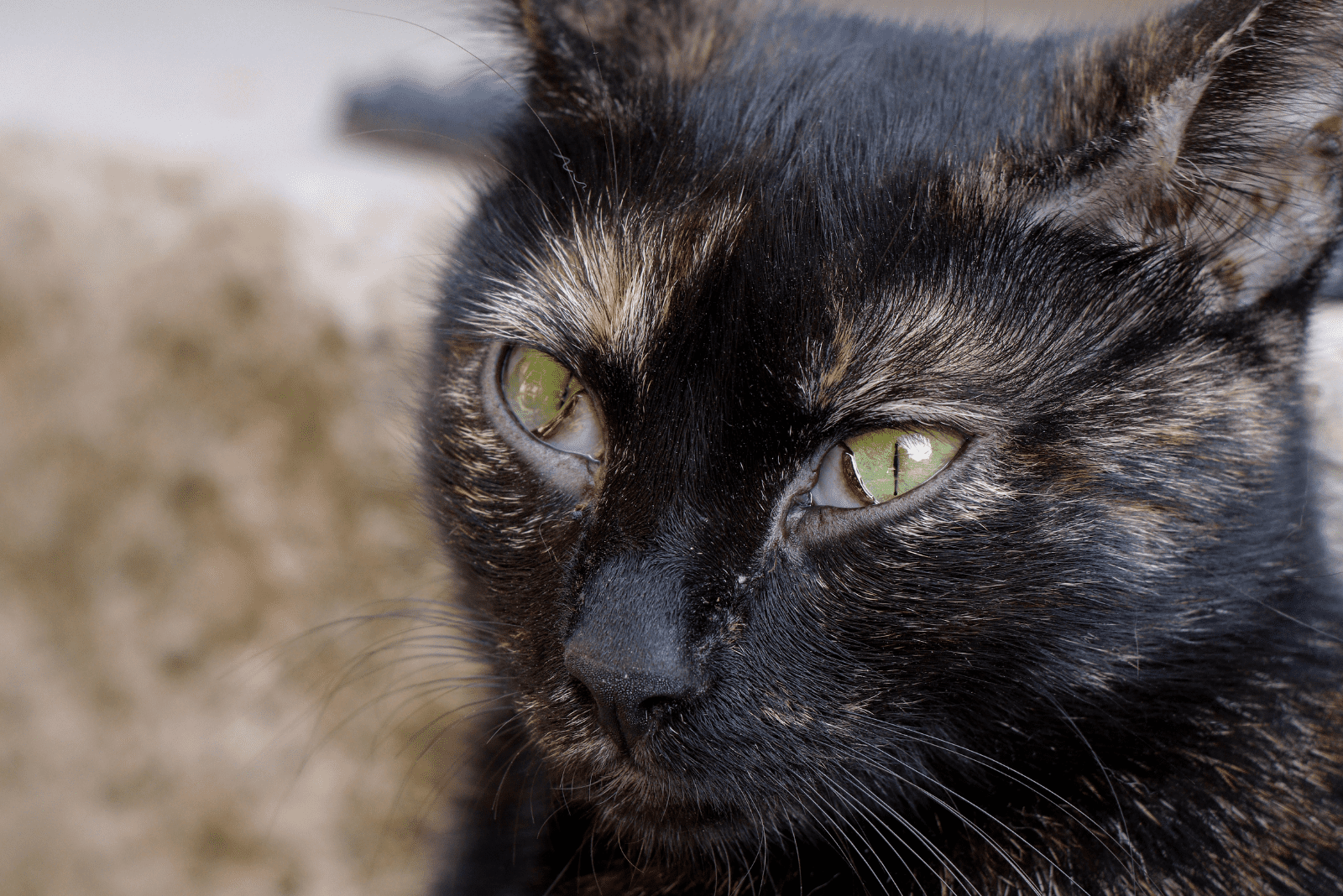
If you have just found out that cats have a third eyelid because it is usually completely concealed, you might be wondering, What is a cat’s third eyelid in the first place and What is its role?
The third eyelid is a retractable membrane located in the inner corner of each of a cat’s eyes . It is known as the nictitating membrane and humans do not have it (we only have a vestigial structure – the tiny pink lump in the corners of each of our eyes).
This inner eyelid should not be visible and if it is, it’s usually a sign that your cat is experiencing some eye issues .
What’s The Role Of A Cat’s Third Eyelid?
The role of the third eyelid is to act as a kind of windshield. It works to remove any dirt, pollen, dust, and other particles that might have landed on a cat’s eye .
The third eyelid ‘s other function is to lubricate your cat’s eyeball by secreting a substance with antiseptic characteristics, effectively protecting the cat’s eyes from any bacteria or microorganisms that may get into the eye.
You might be wondering why humans don’t have it. That is because we don’t really need it. A cat’s eyes are much closer to the ground and are more susceptible to dust and other foreign particles they come in contact with. Essentially, the third eyelid acts as a protective barrier.
Now that we have covered the basics, let’s explain why your cat’s third eyelid might be showing, considering that this is something that is not supposed to happen.
13 Causes Of Your Cat’s Third Eyelid Showing
Apart from your cat’s third eyelid showing after they’ve woken up or when your kitty is really tired or has had an anesthetic, the other reasons for this are more serious.
As you’ll see, all of these causes of a cat’s third eyelid showing also have some other symptoms. A cat only having a visible third eyelid but showing no other symptoms is extremely uncommon and is almost exclusive to Haw’s syndrome (which you’ll learn about now).
Even if your cat is not showing any other symptoms apart from third eyelid protrusion , there is a chance it will start showing other symptoms in a while, so it’s good to be aware of all potential causes of your kitty’s eye issue .
Now let’s begin!
1. Foreign Bodies In The Eye

The simplest reason your cat’s third eyelid is showing is that something (a foreign body ) is stuck in your cat’s eye . Apart from a visible eyelid, your cat is bound to experience excessive blinking, watering of the eyes, and they may paw at their eyes.
You might be wondering what foreign bodies can possibly get in your cat’s eye , and some of the most common include:
🐾 Tiny pieces of soil or dirt
🐾 Dust
🐾 Small pieces of grass
🐾 Splinters and thorns
🐾 Tiny stones
🐾 A fly or any other tiny bug
If your cat doesn’t manage to dislodge the foreign object themselves, you need to get help from the veterinarian, as they’ll know exactly how to help your kitty.
2. Eye Injury
There are many different ways that your cat might sustain an eye injury . The most common cause is that your cat has been in a fight, which has resulted in an ocular injury. The eye’s natural response is to protrude the third eyelid to “protect” the eye.
Apart from this, you might also observe your kitty has excessively watery or even bloody eyes as well.
This is something that should be taken seriously as your kitty might have injured the eye or the eye socket more seriously than it appears, so you need to go to the vet as soon as possible.
3. Dehydration
Dehydration is a potential cause for your cat’s third eyelid showing.
The role of the third eyelid is to remove foreign matter out of the eye, as well as lubricating it. If your cat is dehydrated, there is a possibility their eyes will dry out. In this case, the third eyelid arises to help lubricate it.
The cause of dehydration is something you need to find out. It may be that your cat simply hasn’t been drinking enough water for a few days (for example because the water was dirty in some way) or it can be a symptom of an underlying condition, such as kidney disease.
Either way, a dehydrated cat will have other symptoms aside from the third eyelid showing, so there is no way you will not notice your cat is sick. Dehydration is a serious health issue that needs to be taken care of immediately.
4. Conjunctivitis (Pink Eye)

Conjunctivitis , otherwise known as pink eye , is an infection or inflammation of the conjunctiva – the mucous membrane that lines the outermost part of an eye.
This is a relatively common eye infection in both cats and humans and you may have experienced it at some point yourself. If so, you will know how unpleasant it is…
Bacteria, viruses, fungi, allergens, and injury are common causes of this ocular infection, with calicivirus and the herpes virus being the most common cause .
Your cat is bound to have some other symptoms apart from the third eyelid showing, such as redness of the eyes and/or eye discharge . Treatment for it is symptomatic, but if it is not resolved in a reasonable time frame, visiting the vet is the right thing to do.
5. Upper Respiratory Infection (URI)
The feline URI resembles the human common cold in many ways. An infection of the sinuses, throat, and nasal mucosa is known as feline upper respiratory infection .
Bacteria or viruses are the cause, with the most frequent causes of URI in cats being feline herpesvirus type-1 and feline calicivirus. Because of this, it’s important that your cat is vaccinated against them.
Either way, other symptoms you can observe (or you can expect to arise shortly after noticing your cat’s third eyelid showing) include:
🐾 Sneezing
🐾 Squinting
🐾 Runny nose
🐾 Eye discharge
🐾 Not eating
🐾 Many other possible symptomes
If left untreated, a feline URI can become a serious threat to your kitty’s health, so make sure to treat your cat’s upper respiratory infection in good time.
6. Haw’s Syndrome
Third eyelid elevation in both eyes is referred to as Haws syndrome , otherwise known as bilateral third eyelid protrusion.
The cause is not yet known, but a correlation with gastrointestinal (GI) inflammatory illnesses has been observed. Even if the elevated third eyelids are obstructing the cat’s eyesight, the cat’s vision remains normal with this condition.
Since this ailment typically resolves on its own, no special care is required. Although, you should not expect it to go away in a day or two. It has been reported that it almost always takes more than four weeks for the syndrome to completely go away.
7. Horner’s Syndrome
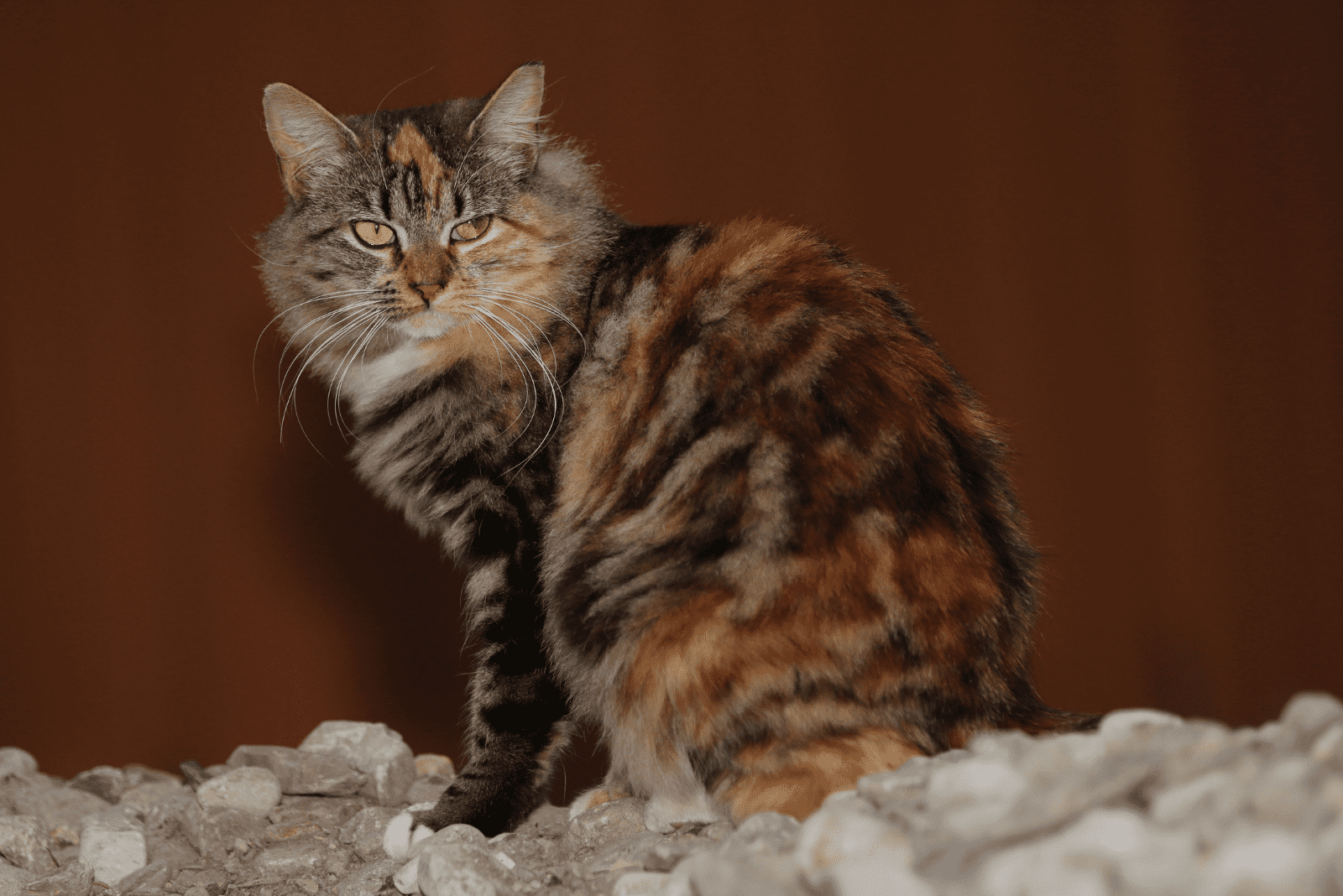
A neurological condition affecting the eye and facial muscles named Horner’s syndrome is brought on by the sympathetic nervous system not functioning properly. The illness often develops rapidly and only affects one side of the head, though it can occasionally be bilateral.
Symptoms of Horner’s syndrome are easily noticed as the affected eye will look visibly abnormal. The affected eye will have drooping upper eyelids, smaller pupils, will appear sunken, and the third eyelid will be visible and red.
The syndrome usually goes away after a while, however the exact reasons for this condition are still not fully understood. If you notice your cat experiencing these symptoms, make an appointment with your veterinarian, as Horner’s syndrome is sometimes “a by-product” of a tumor or underlying disease that requires medical attention.
8. Feline Glaucoma
An eye condition known as feline glaucoma is characterized by the eye’s dysfunctional aqueous humor drainage system. Aqueous humor is a watery fluid in the front part of the eye, behind the lens. The optic nerve is put under pressure as this liquid builds up, leading to increased pressure on your cat’s eye(s ).
The optic nerve is essential to a cat’s vision because it sends information to and from your brain. This nerve can become damaged by this build-up of pressure, and this has the potential to cause blindness.
Although very uncommon, this condition can appear in cats and its symptoms include:
🐾 Swelling of the eye
🐾 Eye watering
🐾 Eye being partially closed
🐾 Pawing at the affected eye
🐾 Eye cloudiness
🐾 Third eyelid protrusion
If you observe any of these symptoms, go to the vet immediately as feline glaucoma can cause complete vision loss in a cat.
9. Eyeworms
Thelazia californiensis , an eye worm parasite, can infest the eye(s) of a cat. A cat might not show many signs at first, apart from squinting, being sensitive to light and occasionally developing conjunctivitis .
This might not be something any cat owner wants to hear but – the eye worms typically can be seen with the naked eye, however it might be required to place the cat under anesthesia to thoroughly inspect the eyes and to positively identify eyeworms.
Infestations can be treated using anti-parasitic drugs. To lessen any swelling, redness, or irritation brought on by the parasite, anti-inflammatory drugs may also be applied. Additionally, subsequent bacterial infections (such as conjunctivitis ) can be treated with antibiotics.
10. Corneal Ulcer
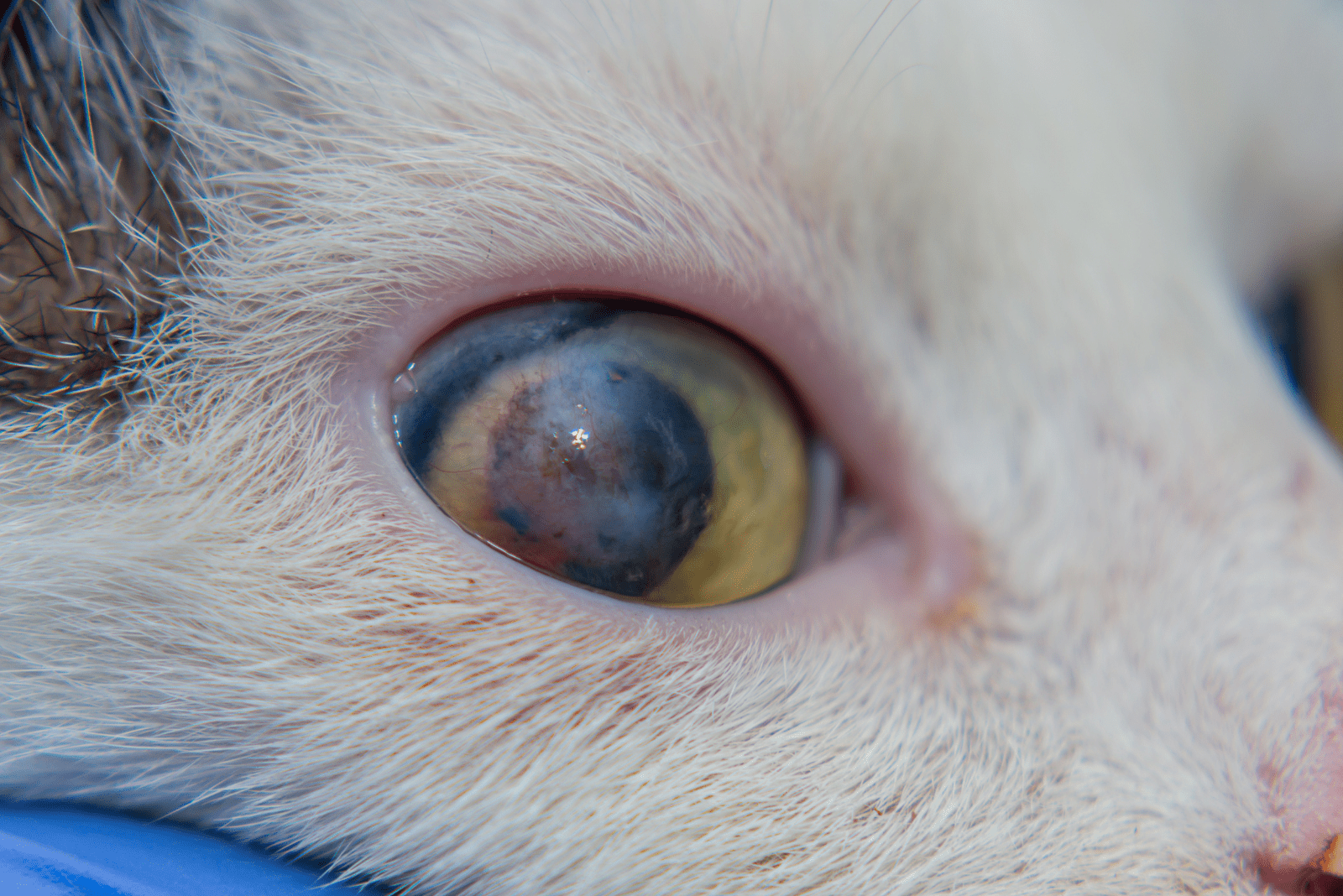
An open wound in the cornea ‘s outer layer is known as a corneal ulcer . The most common cause of a sore in the eye is trauma (for example a thorn scratching your kitty’s eye), but it’s also possible that an eye infection is to be blamed.
Depending on the severity of the sore, corneal ulcers can sometimes even be seen with the naked eye. In the majority of cases, cats experience a lot of pain with these sores.
It’s easy to observe that something is wrong with your cat – your cat will squint, keep the eyelids closed or blink rapidly. Eye discharge is commonly observed as well.
If you see something like this happening to your kitty, I suggest you visit the vet as soon as possible, as your feline friend is most likely in a lot of pain.
11. Uveitis
A painful inflammation of the uvea is known as uveitis. The uvea is the part of the eye that includes the iris, the ciliary body, and the choroid.
Symptoms of an inflamed uvea include red eyes, squinting, sensitivity to light, change in a cat’s mood, weight loss , changes in litter box habits, etc.
The most likely causes of feline uveitis are an eye injury , cataracts, tumors , viral, fungal, or parasitic agents.
Treatment for this condition depends on the cause, so it’s vital you visit the vet for them to correctly find the cause of your cat’s uveitis. It’s important to act in good time, because uveitis can cause blindness in cats.
12. Feline Tumors
Lymphoma or Squamous cell carcinoma are a potential cause of third eyelid protrusion . It’s important to note that this is an extremely rare condition for cats, but it’s not impossible, so I have to mention it.
Third eyelid protrusion is one of a few symptoms, alongside visibly abnormal appearance of the eye, constant inflammation, and eye discharge .
If you ever observe any type of noticable change in your cat’s eyes or the appearance of different symptoms, I suggest you go to the vet immediately.
13. Cherry Eye
The prolapse of the lacrimal gland (the gland that produces tears) in the third eyelid is known as cherry eye . The abnormal movement of this gland out of its normal position looks like a protrusion from the inner corner of the eye .
In this case, there is reduced tear production which causes your cat difficulty in even closing its eyes.
The cause of this condition is not yet known, but it has been observed that certain cat breeds, such as Burmese cats, are more likely to develop it. It is more commonly observed in only one eye, but sometimes both eyes can be affected.
If your cat has a case of the “ cherry eye ”, surgery is the most likely treatment they will receive at the vet’s office, where the lacrimal gland is being placed back in its usual position.
What If The Third Eyelid Is Showing In One Eye Only?
Sometimes a cat’s third eyelid will only be visible in one eye, while the other eye is completely unaffected. Still, that means your cat is having issues that are specifically tied to that eye, and not its overall health.
The third eyelid showing in one eye can be caused by a foreign object in that eye, or an injury sustained to that eye only. A corneal ulcer also can develop in one eye only or it might be that your cat’s dealing with an infection that hasn’t yet spread to the other eye.
What Should You Do About Your Kitty’s Third Eyelid Showing?
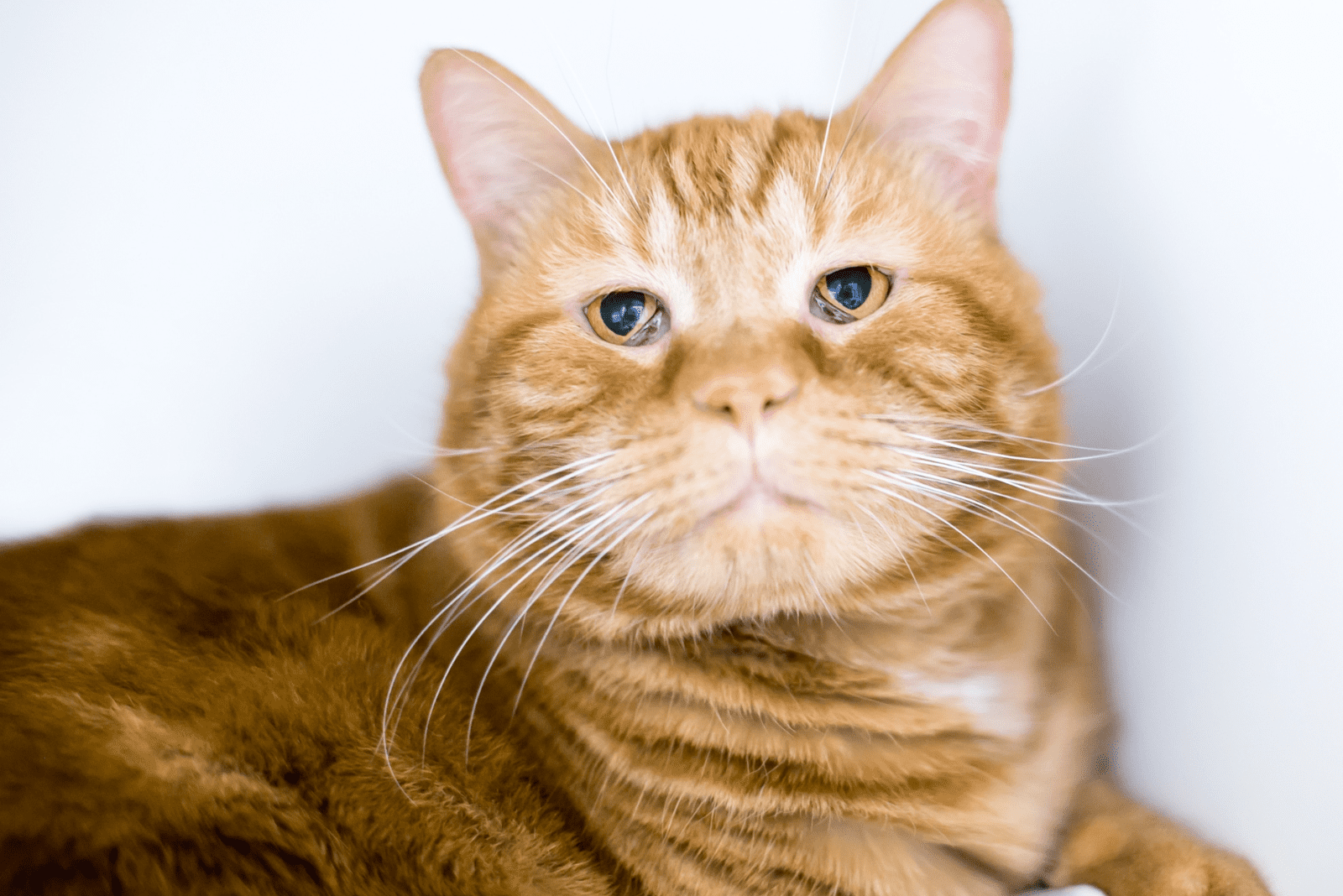
Third eyelid protrusion is something that needs professional health care provided by a veterinarian. As you have already seen, most of the causes of third eyelid protrusion are pretty serious.
If you observe your cat’s third eyelid not retracting in a day or two, I highly suggest you visit the vet. You should not try treating your cat’s eye issue yourself, as that can do more harm than good, even though your intentions are the best.
What To Expect At The Vet’s Office
In most cases, you will need to visit the vet’s office, so it’s good to know what to expect, and that is:
🐾 A complete medical history review
🐾 A physical examination
🐾 Possible examination by a veterinary ophthalmologist
🐾 Blood test to check for signs of infection
🐾 Testing for the presence of neurological diseases
🐾 CT scan or MRI of the eye
What Treatment Can You Expect?
There is no universal treatment for your kitty’s third eyelid . The treatment really depends on the cause of the eye issue . For example, treatment for conjunctivitis and Horner’s syndrome is not the same. For this reason, correct diagnosis is of the uttermost importance, because it determines how treatment should proceed.
It’s important to note that you should not try any human medication or eye drops on your cat. I know you’re just trying to help, but it can do more damage than good. Listen to your doctor and wait for a diagnosis to be established, and then follow your vet’s instructions carefully.
How To Prevent Your Kitty’s Eyelid From Showing?
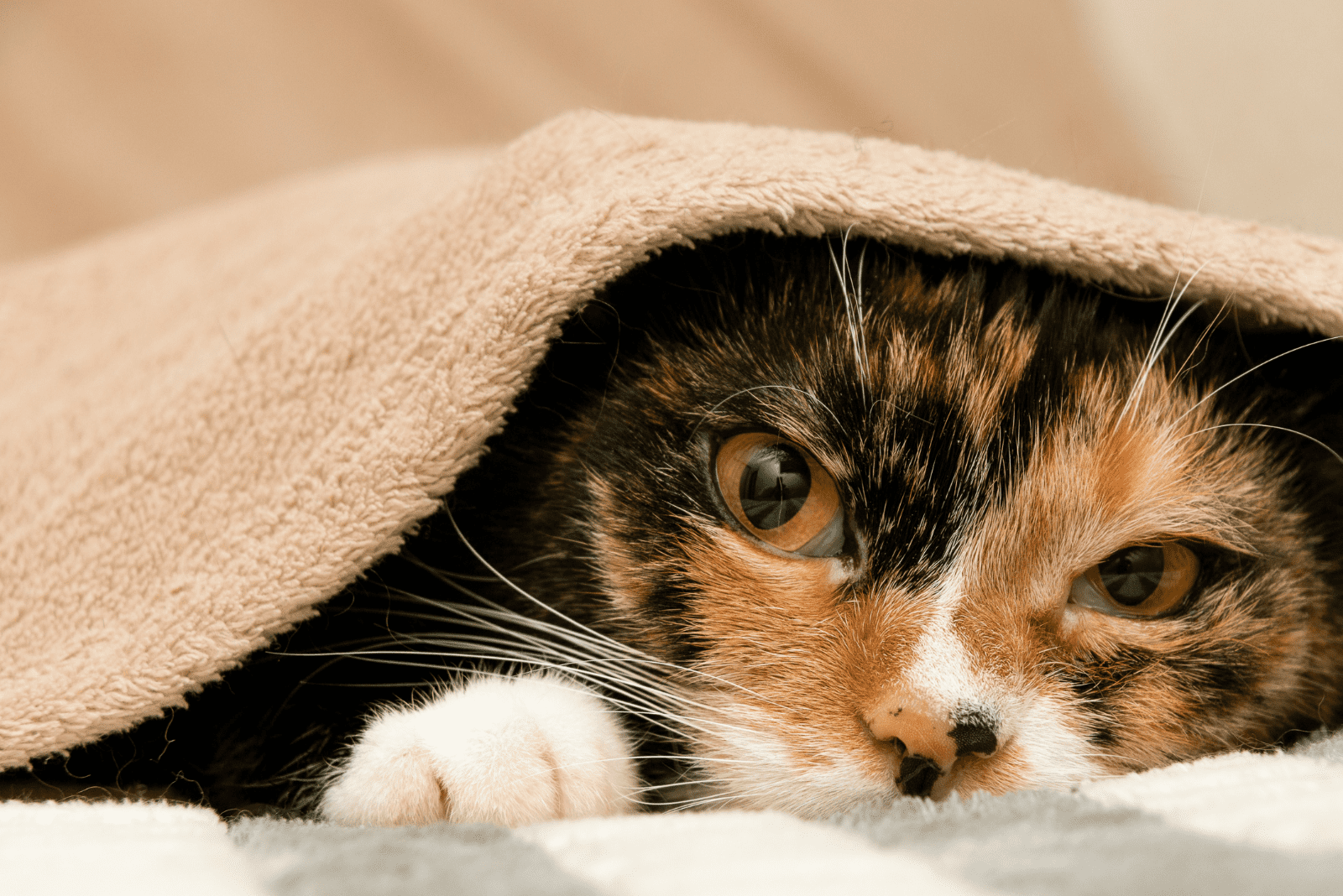
There really isn’t much you can do to prevent your kitty’s eyelid from showing. It’s not like there is a magic way to prevent every bacterium, virus and dust particle from entering your cat’s eyes.
Some may say that the best way to prevent your cat’s eyelid from showing is to keep your cat exclusively inside, but that is simply not a viable option for many cat owners. This issue is not something a cat experiences very often, therefore the strict measure of keeping your cat only indoors is not really needed (although it is effective).
The best thing you can do is to treat all your cat’s health issues as soon as they arise.
FAQ
What Does A Cat’s Third Eyelid Look Like?
A cat’s third eyelid is a membrane that can be observed in the bottom inner portion of a cat’s eye . It appears cloudy and white-ish.
Why Can I See My Cat’s Third Eyelid?
Seeing your cat’s third eyelid is normal only if you see it for a second or two, and then it retracts to its normal position (meaning you’ll no longer be able to see it). That can happen, for example, when your cat wakes up or is really tired.
However, if your cat’s 3rd eyelid continues being visible and does not retract to its normal position, then that’s a sign that something is wrong. Visible third eyelids are a clear indication your cat is fighting some health issue that usually needs treatment.
If your cat has visible third eyelids on one or both eyes, you should take your feline friend to the vet as they’ll know best what to do.
Is It Normal For Cats To Have Their Third Eyelid Showing?
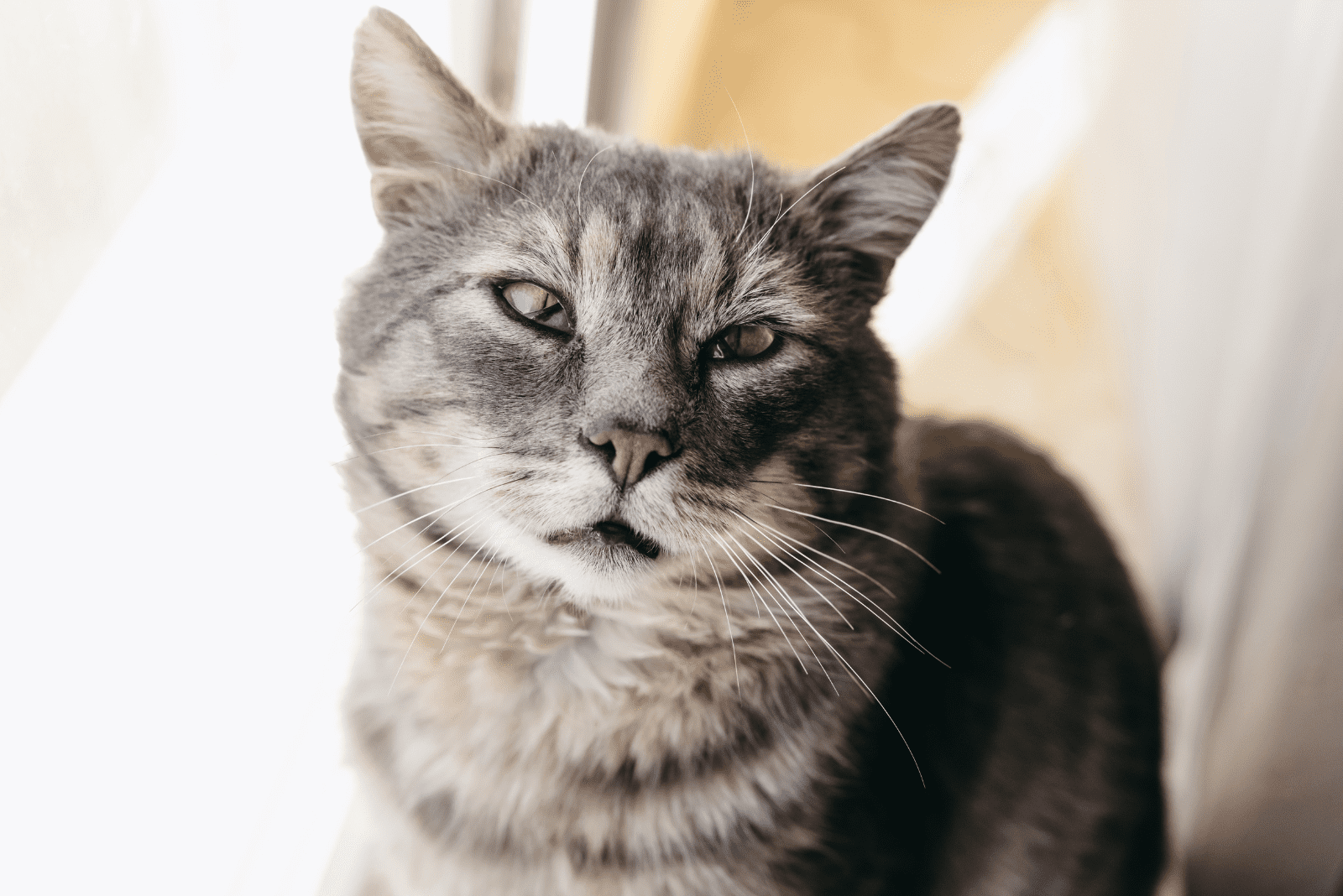
It is not normal for cats to have their third eyelid showing. A cat’s third eyelid is something many cat owners do not even know exists, because they’ve never seen it. A third eyelid ideally should not be seen at all, as its normal position is completely retracted away from the visible surface of the eye.
If your cat has visible third eyelids or even just one visible eyelid, that is a clear indication that something is wrong. There are several possible causes of this ocular issue and all of them should be taken seriously, as they will most likely need veterinarian help.
Why Is My Cat’s Third Eyelid Not Retracting?
Your cat’s third eyelid is normally supposed to retract in a way that you never actually see it. If you observe your kitty’s third eyelid not retracting for some time, then that’s a sign something is wrong. What could be causing your kitty’s eye issue ? The potential causes are:
🐾 Foreign bodies in your cat’s eye(s)
🐾 An eye injury
🐾 Dehydration
🐾 Conjunctivitis
🐾 Upper respiratory Infection
🐾 Haw’s syndrome
🐾 Horner’s syndrome
🐾 Eyeworms
🐾 Corneal Ulcers
🐾 Uveitis
🐾 Feline tumor
As you can see, many of these causes should not be taken lightly, so a trip to the veterinary office is essential.
Should I Be Worried If My Cat’s Third Eyelid Is Showing?
Some potential causes of your kitty’s eye issue will be more serious than others. But at the end of the day, I would say you should not be worried as your veterinarian will surely find the right treatment for your cat’s third eyelid showing.
Depending on the cause of your cat’s eye issue , some treatments take longer than others. It makes sense that treatment for a simple eye infection takes far less time than, for example, feline glaucoma .
The important thing to remember is that a cat’s third eyelid showing is not a matter of life-and-death, and with your vet’s guidance, your kitty should be perfectly fine.
How Long Does It Take For A Cat’s Third Eyelid To Go Away?
The time it takes for a cat’s third eyelid to go away depends on the following factors:
🐾 The cause of your cat’s eye issue
🐾 How advanced your cat’s eye issue is
🐾 How it’s treated
🐾 How well your cat responds to treatment
As you can guess, if your cat’s issue is due to a simple superficial eye injury it will surely be healed up in no time. On the other hand, if your cat’s dealing with How’s syndrome, this can take up to 6 weeks to go away.
Of course, if you noticed your cat’s eye condition early on and sought veterinary advice quickly, it will most likely be easier to treat and will take less time to be resolved.
It’s important for the treatment to suit the cause of a cat’s third eyelid protrusion , and that’s why you should never try to treat your cat’s eye issue yourself and should always visit a vet so they can make a proper diagnosis.
My advice is to simply follow your vet’s instructions and your cat’s issue will surely be resolved.
In Conclusion
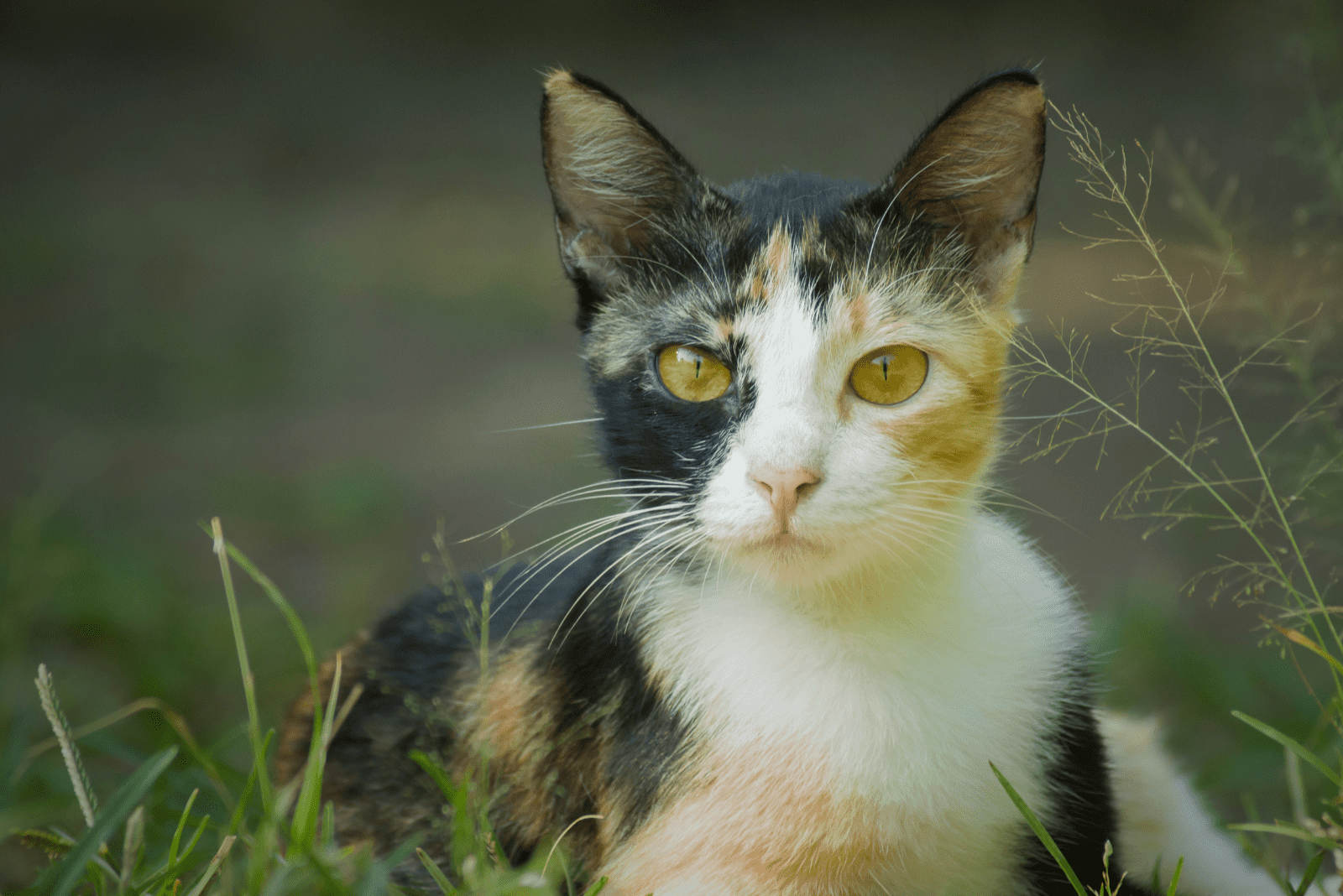
You might not have known, but your cat has a third eyelid in each eye. If your cat gets sick, there is a chance that the symptom is a protrusion of the third eyelid . Normally, the third eyelid should not be visually observable and if it is, that means your cat is having some eye issue .
The potential cause of your cat’s third eyelid showing can be a foreign body stuck in your cat’s eye, a sustained eye injury, dehydration, conjunctivitis, feline URI, feline uveitis, Haw’s or Horner’s syndrome, corneal ulcers, tumor, eye worms, or a dermoid cyst.
The majority of the time, treatment is necessary. If you notice your cat has a protruding third eyelid , it’s best you visit the vet’s office. The veterinarian will be able to make your pet feel better again once they find out the cause of your cat’s eye issue .
A cat third eyelid showing no other symptoms is still something that needs a vet’s closer look. Even if your cat is not showing any symptoms, that does not mean symptoms will not arise. I t’s best you treat your kitty’s health issues as soon as you notice something is wrong.
No matter the cause of your cat’s issue, I am sure your kitty will be perfectly healthy and happy after proper treatment (if treatment is necessary)!
Related Articles:
Cat Sneezing And Watery Eyes – Causes And Treatments
Is Your Cat Snorting? Causes & Solutions For A Snorting Cat
Cat Suddenly Lethargic And Weak – Causes & Treatment Options


